Article
9 Memorable Drug Mascots
Author(s):
OTC and prescription drug mascots may play a larger-than-expected role in patients' health care decisions.
OTC and prescription drug mascots may play a larger-than-expected role in patients’ health care decisions.
The United States and New Zealand are the only countries in the world that currently allow direct-to-consumer (DTC) advertising. Taking advantage of the opportunity, US drug manufacturers spent $3.4 billion on advertising for the top 10 brand-name prescription drugs last year.
The FDA oversees drug advertising to ensure that all ads are truthful, balanced, and accurately communicated. However, the agency does not have a say over pharmaceutical mascots.
Throughout the years, these mascots have ranged from abrasive germs to cute creatures that offer solutions in a soothing tone.
Drug branding and DTC advertising are powerful tools that can take medicating out of the hands of prescribers and pharmacists. Pharmacists in particular are in a great position to describe the risks and benefits of medications that patients frequently see on televisions.
Here are some of the most memorable OTC and prescription drug mascots:
1. Zoloft Blob
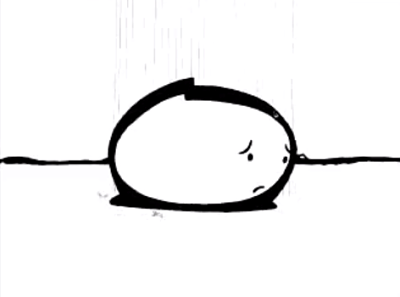
Zoloft is indicated to treat adults with major depressive disorder, obsessive-compulsive disorder, panic disorder, and social anxiety disorder.
Pfizer’s advertisements featuring the Zoloft blob began running in May 2001. Since then, it has been the most lovable mascot in the depression drug space.
In the flagship Zoloft commercial, a groaning, downcast blob trudges slowly through life accompanied by a perpetual raincloud. The end of the ad shows the blob smiling as he effectively manages his depression.
Eventually, the raincloud dissipates to make way for clear skies and a single dandelion. Then, a blue bird (is that you, Zoloft?) accompanies the blob as it happily bounces down the road.
The pursuit of mental balance has never been more adorable.
2. Xifaxan Gut
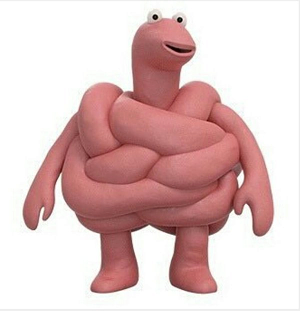
Salix’s Xifaxan was approved in May 2015 to treat irritable bowl syndrome with diarrhea (IBS-D).
The drug’s mascot—which appears to be part dinosaur, part intestine, and part Jar Jar Binks—was a breakout star when it appeared in a Super Bowl 50 commercial.
In the ad, the Xifaxan gut creature can be seen watching the game in the stadium when, all of a sudden, it is visibly pained by what could only be stomach discomfort related to IBS-D. Not long after, the mascot returns to his seat to watch the game symptom-free, and eventually catches himself on the big screen with football fans cheering all around him.
Overall, the advertisement depicts a victorious day for patients experiencing IBS-D.
3. Peptocopter
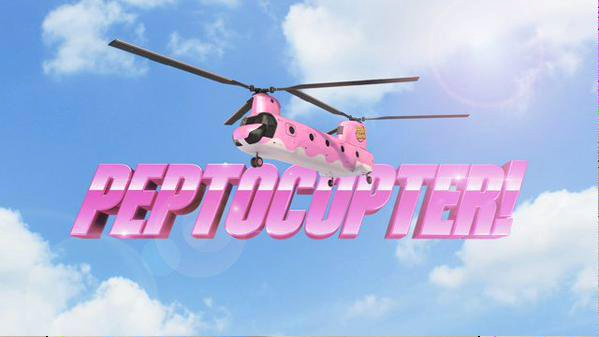
Pepto-Bismol is an OTC product indicated for self-treatment of heartburn or dyspepsia.
A series of TV spots from marketer Procter & Gamble feature the Peptocopter, a pink helicopter with a mandate to be the first responder for patients in need of stomach-relieving powers. It drops tiny pink parachutes containing Pepto-Bismol “at the first sign of stomach trouble”—all while playing rock music.
4. Lunesta Butterfly

Sepracor’s Lunesta was approved in 2005 as a treatment for transient and chronic insomnia.
The drug’s mascot is a mixture of a butterfly and the green fairy that is reportedly seen after consuming absinthe. The creature flies into patients’ windows and guides them to sleep like a guardian of the night.
Despite the serene nature of this mascot, the majority of Lunesta advertisements are spent listing off dismal potential side effects, including increased risk of death.
5. Belsomra Sleep Cat and Wake Dog
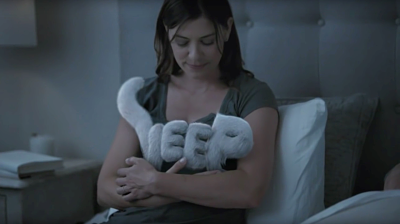
Belsomra was approved in August 2014 to treat patients who have difficulty falling and staying asleep.
Merck’s ads for Belsomra feature a woman with 2 furry pets: a cat with the word “sleep” as its body, and a dog in the form of the word “wake.” The pets appear to fight throughout the night and keep the woman up, but she eventually restores balance between them and falls asleep.
Some find the cat to be a bit unsettling, but many more find the long list of reported side effects to be the most troubling part of the commercial. A gentle, reassuring female voice attempts to detract from the fearfulness of Belsomra’s potential side effects, which include “walking, eating, driving, or engaging in other activities while asleep without remembering it the next day” and “the temporary inability to move while falling asleep or waking up.”
Despite these risks, Belsomra’s sales are currently projected to be the highest among insomnia treatments within the last decade.
6. Nasonex Bee
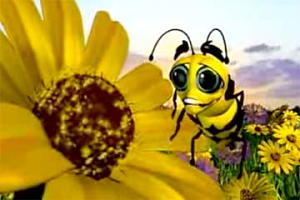
Merck’s Nasonex is a nasal spray indicated for the treatment of symptoms associated with allergic rhinitis, the prophylaxis of season allergic rhinitis, and nasal polyps.
In advertisements, the Nasonex Bee voiced by Antonio Banderas overcomes the trials and tribulations of seasonal allergies and congestion, which include not being able to smell flowers, mow the lawn, or spend time with pets without having allergy-related discomfort.
During the commercial, the Nasonex Bee can be seen courting a lady bee. Presenting her with flowers, he proclaims, “Love means never having to say you are congested.”
Nasonex ads were the subject of a study alleging that when drug ads list benefits, the images on the screen match the voiceover and move slowly, but when side effects are listed, the images often become mismatched and the text is distracting.
The FDA ultimately concluded that the tone and consistency of background images with risk information did not impair viewers’ understanding.
7. Myrbetriq Bladder
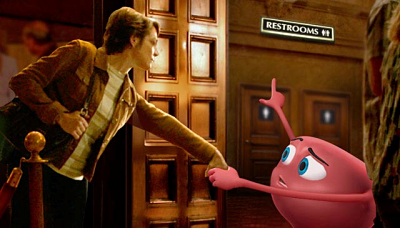
Astella’s Myrbetriq was approved in 2012 to treat overactive bladder with symptoms of urgency, frequency, and leakage.
In TV spots, the insistent Myrbetriq bladder leads a woman experiencing overactive bladder into several stores that she’s not interested in visiting while she’s en route to the movies. Deciding to take matters into her own hands, the woman visits a physician, and her bladder accompanies her during the consultation.
8. Jublia Toe

Valeant’s Jublia was approved in June 2014 as a topical foot medication indicated to treat onychomycosis.
The Jublia Toe made appearances in both the 2015 and 2016 Super Bowl commercial lineups wearing a toe-sized purple helmet. In the latest Super Bowl commercial, a man with toenail issues is inadvertently transported to an alternate dimension where former football greats Howie Long, Deion Sanders, and Phil Simms are candidly discussing the otherwise very delicate subject of toenail fungus while receiving pedicures.
9. Mr. Mucus
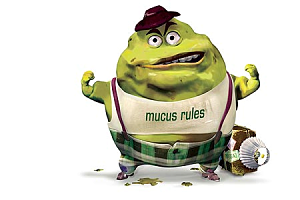
Reckitt Benckiser’s Mucinex is an OTC remedy for cold symptoms that loosens mucus and thins bronchial secretions to rid airways of mucus.
Mucinex’s Mr. Mucus is a precocious ball of mucus that refuses to accept nasal decongestants as an effective treatment option. In one commercial, Mr. Mucus attempts to destroy a lovely spring day by spreading pollen everywhere with a lawn mower—only to see Mucinex thwart his plans.





